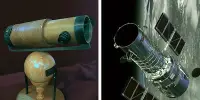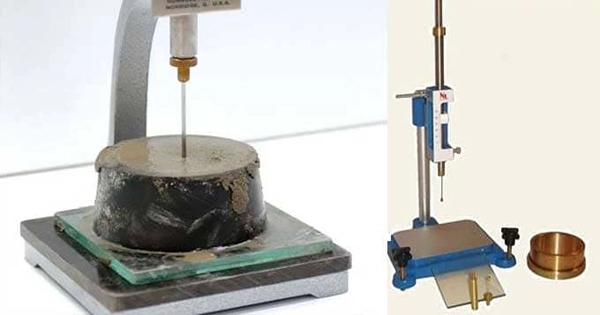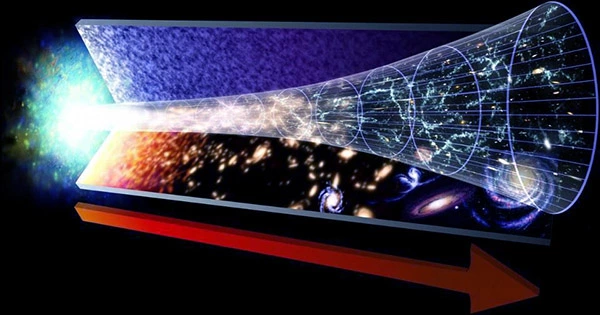The concept of extraterrestrial visitors arriving in flying saucers has been a staple of science fiction and conspiracy theories for years — 74.52 years, to be exact. However, here is the twist: what if we have always been the flying saucers? Engineers from MIT’s Department of Aeronautics and Astronautics have been working on a disk-shaped lunar rover that can float over the Moon using small ionic thrusters fueled by the Moon’s natural force field, like something out of an H. G. Wells story.
“We’re thinking about utilizing it like the Japanese space agency’s Hayabusa missions,” said Oliver Jia-Richards, the main author of a feasibility report on the project released in March. “That spacecraft orbited a tiny asteroid and sent miniature rovers to explore its surface. Similarly, we believe that in the future, a mission may send out miniature hovering rovers to examine the Moon’s surface and other asteroids.” It is not as far-fetched as it may appear. The Moon and asteroids, unlike Earth and (to a lesser extent in some situations) the other planets in our Solar System, have virtually no atmosphere.
This can have some peculiar consequences: their surfaces, which are shielded from the Sun’s radiation and the surrounding plasma, build up electric fields that pull items away from the ground. It is strong enough to float dust more than a meter high on the Moon. Of course, spacecraft are far larger than dust particles, but a team of MIT and NASA-trained engineers had no trouble with that. Mylar, a form of polyester fabric renowned in the aerospace industry for its exceptional tensile strength, stability, and electrical insulation, was used to construct the rover.

Mylar would naturally match the charge coming from the ground in an airless, barren environment, and, like the magnets, we experimented with in eighth-grade physics, the two surfaces would resist each other, effectively levitating the rover. “This type of ionic design utilizes very little power to create a lot of voltage,” said Paolo Lozano, one of the study’s co-authors. “Because the required power is so little, you could do it virtually for free.”
For minor asteroids, natural repulsion may be sufficient, but the Moon has one additional complication: its size. Our nearest neighbor in the night sky is easily big enough to drag a small rover into its gravitational field, despite its diminutive size from our vantage point – the Moon isn’t even as wide as Australia. Initially, the researchers envisioned the rover as having thrusters that pushed out negatively charged ions, essentially making it positively charged, similar to the lunar surface. The two bodies should reject each other in principle, pushing the rover away from the ground, but the crew quickly discovered that the force created was insufficient.
“Then we had the idea that we could complement the surface’s inherent charge by transferring our own charge to it?” According to Jia-Richards, to put it another way, if the rover could shoot out positive ion beams into the Moon, enhancing the Moon’s natural electrical field. Is it sufficient to lift the rover off the ground? After a quick mathematical model, the team was convinced: in theory, it could work. A tiny, 0.9-kilogram (2-pound) rover could hover about a centimeter (0.4 inches) above the lunar surface using additional rockets to enhance the Moon’s force against it, opening new avenues into interplanetary research.
“You don’t have to worry about wheels or moving components with a levitating rover,” Lozano explains. “The landscape of an asteroid might be completely uneven, and as long as you had a controlled system to keep the rover flying, you could go through the very harsh, uncharted country without having to physically dodge the asteroid.” What is the best part? This futuristic-sounding concept has already proven to function in practice. The researchers have been testing a little hexagonal test vehicle – about the size of your palm and weighing about 60 grams (2.1 ounces) – with five ion thrusters, one pointing upwards and the others pointing downwards.
The team was able to levitate the hexagonal test rover using a unique configuration meant to resist the Earth’s air conditions and gravitational force, with results that closely matched their forecasts. While moving a 2-pound rover a centimeter off the ground may not seem like much, Jia-Richards stressed that this is only the beginning. “In principle, with better modeling, we might levitate too much greater heights,” he remarked – and although we realize he was most likely referring to uncrewed exploration, we cannot help but hope this means future Moon bases would come with their own fleet of flying automobiles, à la The Jetsons. Hooba-dooba-dooba!
















